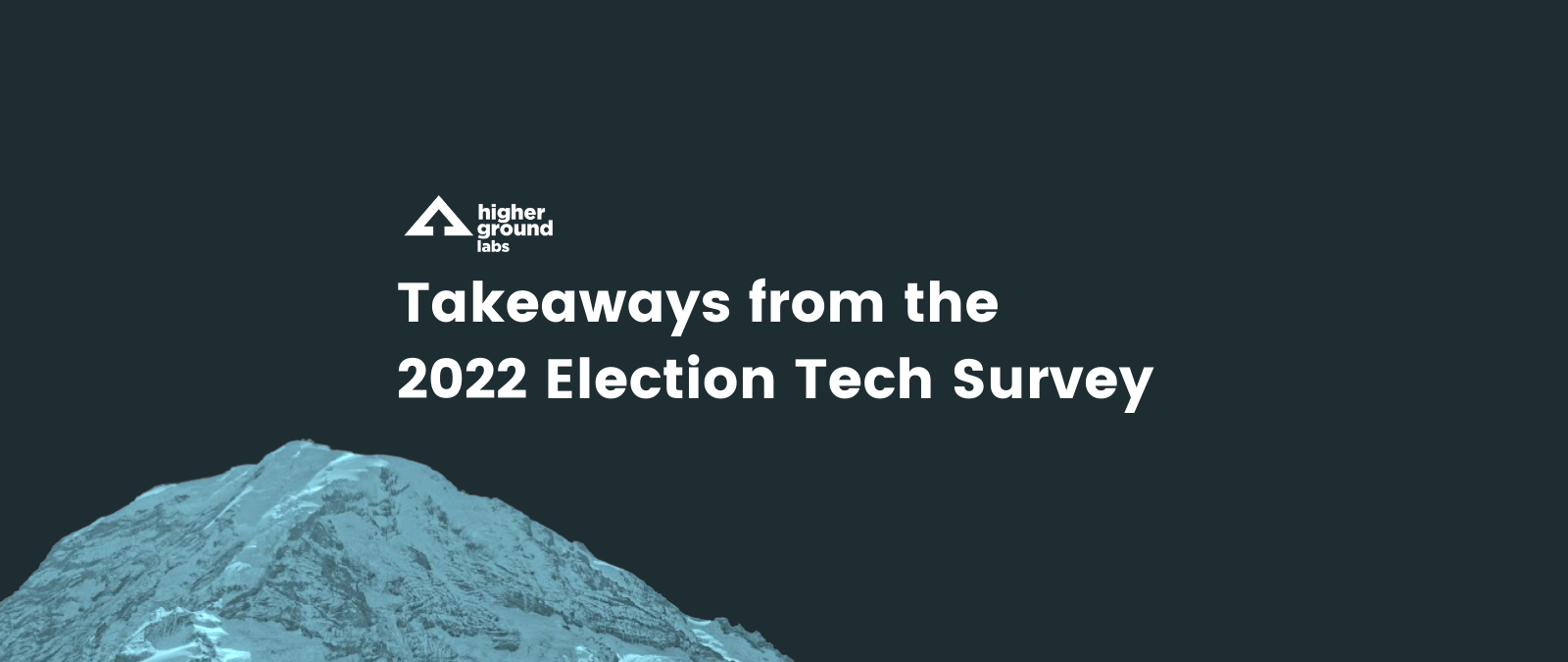Election tech featured prominently in the 2022 midterm elections. As campaigns adopt new tools and strategies to mobilize, research, analyze, fundraise, and achieve their goals, we have an important opportunity to reflect on successes and opportunities for growth in 2024.
Every cycle, Higher Ground Labs releases the Election Tech Survey to understand the trends, use cases, and gaps in political tech, and to better support the progressive movement’s tech needs moving forward. In our 2022 Election Tech Survey, we wanted to know which tools and strategies worked for campaigns, what their tech decision-making looked like, and which pain points remain in the election tech landscape.
With even more coming soon in our comprehensive 2022 Political Tech Landscape Report, take a look at some of the survey insights gleaned from our community this cycle:
- The most common sentiment amongst survey respondents is that technology makes their job easier. This is especially true in the case of high-quality customer support, which often represents an important tech vendor differentiator. They also agree that political tech is easier to use than off-the-shelf commercial tech, and that their teams expect to use political tech to do their jobs. However, calls for advancement remain across tools for research, analytics, mobilization, and more, making even satisfactory and/or core tools difficult to integrate across programs.
- Integration and advanced analytics continues to be a challenge facing political tech. There is a widespread need for tools and data pipelines to easily integrate in service of better data hygiene, reduced fragmentation, and end-to-end views of supporters. Due to the complex nature of election analytics, improved tools for analysis (including media measurement) could help alleviate significant costs to campaigns.
- Campaigns have begun engaging with tech vendors sooner, as compared to our 2020 Election Tech Survey findings. 37% of respondents engaged over one year before Election Day, as compared to 29% of respondents in our 2020 survey. Moreover, just 7% of respondents said they engaged at the last minute in 2022 (1-3 months before Election Day), down from 17% in 2020. This represents a promising trend for campaigns to take full advantage of political tech’s power, and to limit the opportunity cost of late adoption.
- For campaigns with smaller budgets, cost remains the primary reason why they say “no” to purchasing political tech. For those with a higher budget, the primary concern relates to complex integration.
- When it comes to areas for improvement, respondents from federal campaigns most commonly call for tech advancements related to research, while state and local campaign respondents called for tech advancements on both research and engagement. Meanwhile, C3/C4/PAC/Consultants are keen to see tech advancements related to analytics.
- More than ever before, people management and internal tools are top-of-mind. Campaigns are actively thinking about issues of employee burnout, and challenges related to staff shortages. hey are seeking solutions for hiring, people management, talent retention, DEI, and training (especially on tech solutions).
- Campaigns are thinking about adaptive tools and leadership. The cyclical nature of campaigns means that teams must frequently re-create the wheel to spin up new tech stacks. There is an opportunity for growth in the more seamless transfer of tools and knowledge over time, and even for the application of political tech outside of candidate campaigns (e.g. on issue campaigns or year-round local infrastructure).
Thank you to everyone who took the time to provide your input by completing our survey. This research would not be possible without you, and we appreciate your support in shaping the future of political tech for the progressive movement. On to 2024!



